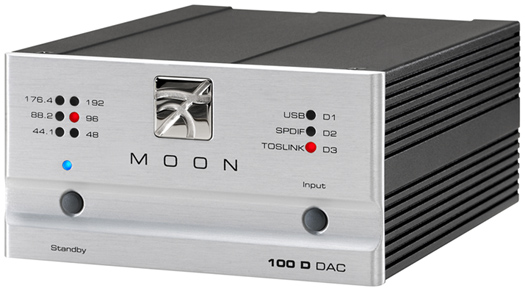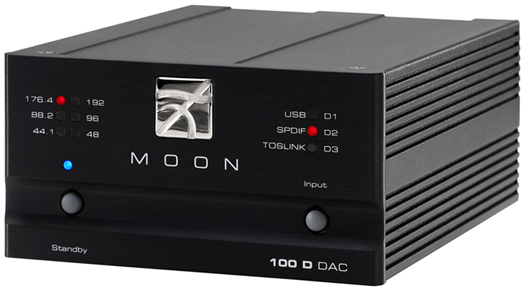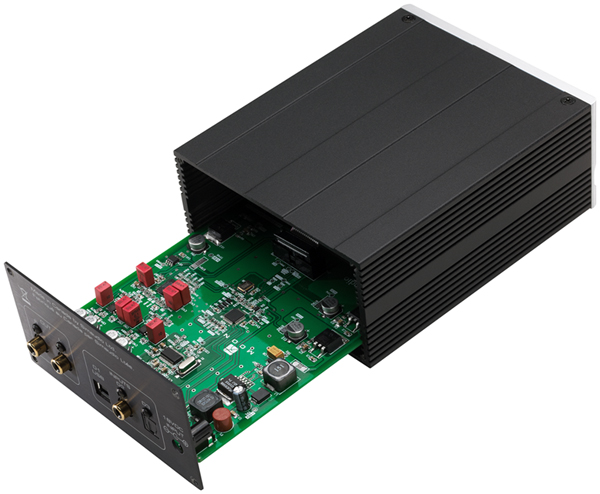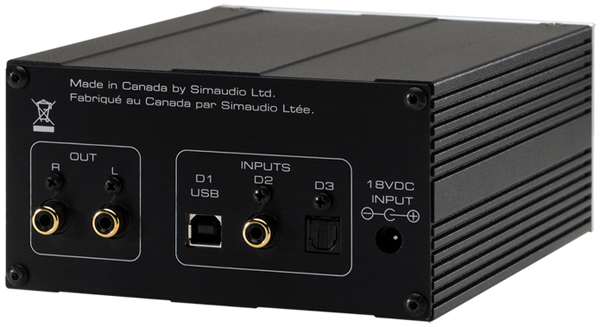
-
 Simaudio MOON 100D DAC Simaudio MOON 100D DAC
沒想到正在聽MOON 300D,Simaudio就發表更入門的100D,跟300D比,100D少了一組SPDIF,然後沒有類比平衡輸出,內部線路也較為簡化,改為DC變壓器供電,不過一樣使用 BurrBrown PCM1793 的晶片,可支援到24Bit/192kHz(USB為16Bit/48kHz)




Significant Design Features:
· Power supply with 3 stages of DC voltage regulation
· A fully asynchronous sample rate converter
· BurrBrown PCM1793 high-resolution 24-bit/192-kHz D/A and 8X oversampling
digital filter
· Accurate digital clocking system for exceptionally low intrinsic jitter levels
· Single-ended RCA analog outputs
· Advanced analog signal path using a DC servo circuit and proprietary analog filter
· Pure copper circuit board tracings with extremely low impedance characteristics
· Extremely rigid chassis construction to minimize the effects of external vibrations
· Accurate matching of high quality components in a symmetrical circuit design
· Designed to be powered up at all times for optimal performance.
www.simaudio.com
-
-
-
-

原廠針對這個有很清楚的說明了
(1) USB 的技術很貴
(2) 因此在這價位下,他們選擇把這預算花在機器的其他地方,做到最好(無敵)
(3) 真的要接高規格的USB,可透過D/D轉換器
An important note about the USB input
The USB input on the MOON 100D accepts a digital audio signal of up to 16-bits/48kHz. This is the native specification of the USB input. However, if you require a higher sampling rate, there are ways to achieve this with the 100D.
Rather than including a USB input for sampling rates exceeeding 48kHz, we opted to provide the best possible power supply, D/A converter and analog stage in the MOON 100D at this price level. Also, keep in mind that USB wasn’t originally intended for use with hi-resolution audio; there are latency issues which compromise sound quality (i.e. jitter and phase errors, etc.). These could be minimized through dedicated costly circuitry, but this would significantly drive up the cost of the 100D without improving the sonic performance on any of the other inputs.
If you intend to use the MOON 100D’s USB input, it’s very likely that your computer is a data source for music. Today most computers with a built-in sound card will have either an S/PDIF (RCA connector) or Toslink (optical connector) digital audio output, thus eliminating the need for a USB input on the 100D. Furthermore, if you’re committed to getting the most out of the music stored on your computer, then in all likelihood you have installed an after-market soundcard in your computer. Virtually all of these soundcards have at least one S/PDIF, Optical or AES/EBU (XLR connector) digital output. At this point, USB connectivity becomes irrelevant. The USB input is there for convenience as opposed to performance.
In the event that you wish to use your computer’s USB connection with files greater than 48kHz, there are several relatively inexpensive after-market products; compact one-box USB-to-S/PDIF interfaces that will work with USB datastreams up to 24-bit, all the way up to 192kHz.
-
-

他的USB,真是食之無味,棄之也不可惜。
要就做到最好(無敵),USB就當它沒有吧。
-
-

USB不是他們公司這價位要強調的地方
不過上次專訪原廠
他們有打算出自己高階的USB晶片....
-
 發文規則
發文規則
- 您不可以發表新主題
- 您不可以發表回覆
- 您不可以上傳附件
- 您不可以編輯自己的文章
-
討論區規則
|













